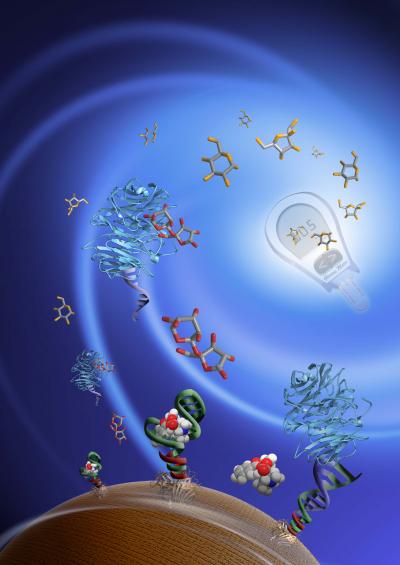Using glucose meters to measure other target molecules in blood, serum, water, or food
July 25, 2011

Coupling functional DNA sensors and glucose meters for fast, easy, portable detection of drugs, toxins, disease markers, and other molecules in blood, water, or food (credit: Li Huey Tan, Yu Xiang, and Yi Lu)
Glucose meters can be used as simple, portable, inexpensive meters for a number of target molecules in blood, serum, water or food, researchers at the University of Illinois have found.
To use glucose meters to detect a target other than glucose, the researchers coupled them with a class of molecular sensors called functional DNA sensors. Functional DNA sensors use short segments of DNA that bind to specific targets. A number of functional DNAs and RNAs are available to recognize a wide variety of targets.
The DNA segments, immobilized on magnetic particles, are bound to the enzyme invertase, which can catalyze conversion of sucrose (table sugar) to glucose. The user adds a sample of blood, serum or water to the functional DNA sensor to test for drugs, disease markers, contaminants or other molecules.
When the target molecule binds to the DNA, invertase is released into the solution. After removing the magnetic particle by a magnet, the glucose level of the sample rises in proportion to the amount of invertase released, so the user then can employ a glucose meter to quantify the target molecule in the original sample.
The researchers demonstrated the use of functional DNA with glucose meters to detect cocaine, the disease marker interferon, adenosine, and uranium. The two-step method could be used to detect any kind of molecule that a functional DNA or RNA can bind to, the researchers said.
Ref.: Yu Xiang & Yi Lu, Using personal glucose meters and functional DNA sensors to quantify a variety of analytical targets, Nature Chemistry, 2011; [DOI: 10.1038/nchem.1092]